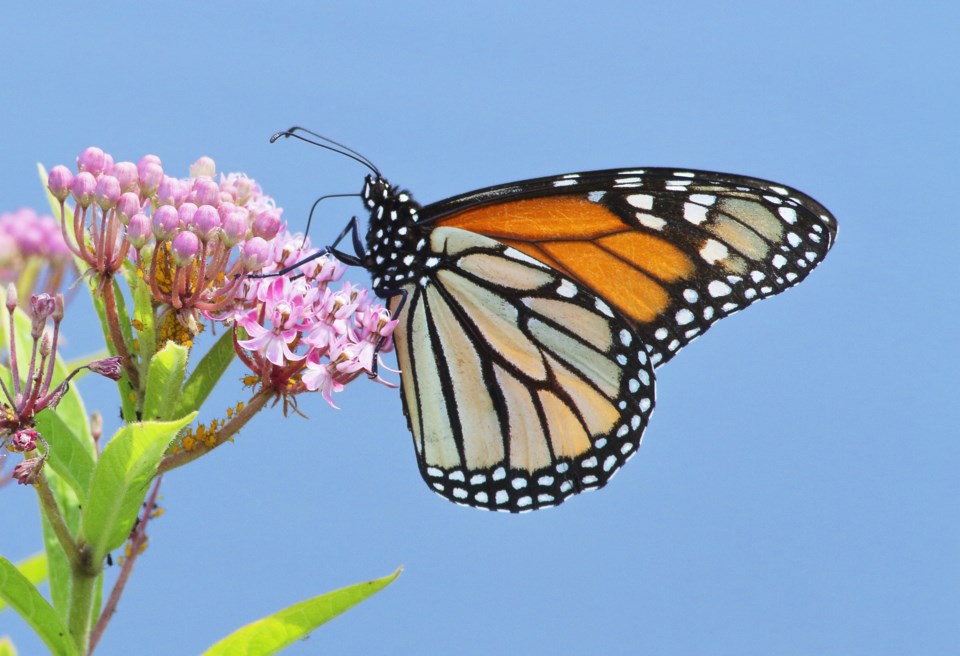Doug Tallamy, the wildlife ecologist and entomologist who urges home gardeners to join forces and create a pollinator-friendly “Homegrown National Park,” is now bringing kids into the effort.
Tallamy has become a leading evangelist for the return of native plants and trees that can support birds, bees and other essential wildlife. Anyone with a yard, patio or windowsill can chip in.
And they can encourage parks, playgrounds, schools and colleges, hospitals and office buildings, golf courses and even airports to join in, he urges.
Tallamy's new book, “Nature’s Best Hope: How You Can Save the World in Your Own Yard” (Timber Press), is aimed at middle schoolers (and, he hopes, their parents) in time for Earth Day. It follows his influential 1999 book for a general audience, “Nature’s Best Hope: A New Approach to Conservation that Starts in Your Yard."
He hopes the book will carry the message into classrooms around the country.
“The idea is that kids are the future stewards of our planet,” he said in an interview with The Associated Press. “My average audience is retired folks, but we can’t wait another generation. I get contacted by kids all the time, and this is stuff you can do and actually see results.”
Little things can make a big difference.
“You don’t have to worry about the entire planet. Just do something about the little piece of the planet that you can do something about. That’s really motivating for parents as well as kids,” he said.
The new young reader's edition lists easy changes that kids can make at home to create better habitat for insects and birds. For instance, switch out a white lightbulb on your porch for a yellow one that’s less attractive to insects. Reduce the amount of lawn. Or plant some native plants.
The book includes a few easy projects like building a “bee hotel” out of an empty metal can and strips of paper, or covering window wells so little creatures don’t get trapped in them.
“Or just plant an acorn. It’s free and easy and you can watch it grow, and it makes a big difference,” Tallamy says.
He envisions all the little pollinator-friendly patches — a proliferation of gardens and public spaces — sewn loosely together to form Homegrown National Park.
Spreading the word that what we do at home can improve the environment is important, said Tai Montanarella, who teaches kindergarten through high school kids about native plants as the New York Botanical Garden’s associate director of school and out-of-school programming.
“At the heart of Tallamy’s book is the observation of plants, and the interaction between plants and birds and insects. It underscores the connectivity of our food web and of society,” she says.
“Kids sometimes feel a greater sense of urgency and call to action than adults. Many of these ideas seem sensible and practical for kids, while they can be a heavier lift for adults sometimes.”
For younger children, she recommends the picture book “The Garden Next Door,” by Collin Pine (River Horse Books), about children who investigate why their neighbor's yard has more birds, fireflies and other natural wonders than their own.
And she recommends the list of books for children and teens compiled by the New York Botanical Garden's LuEsther T. Mertz Library on its website.
Adults, Montanarella said, can be more receptive to messages when they come from passionate kids.
In Pelham, New York, Anna Simonsen-Meehan had all the English ivy removed from her property border and gently asked her neighbors if they’d consider doing the same, since it’s invasive and creeps into her native plantings. Nothing happened.
But when her 7-year-old son, Alrik, recently encountered one of the neighbors on the sidewalk and gave him an impassioned lecture about how invasive English ivy is, the man listened carefully. (“I mean, what else can you do when a child is speaking with such sincerity and passion?” his mother said.) And now the ivy is gone.
“I said, ‘Don’t you want to remove that ivy? It’s invasive.’ He was definitely listening,” recalled Alrik, who has been involved in removing invasive plants and encouraging native ones both at home and in the community.
Tallamy, a professor at the University of Delaware, starts his new book by asking kids to take a few minutes to look closely at their yard.
Did you see “a single animal — a bird, a bug, a snake, a mammal of any size — hop, fly, flutter, slither, crawl, or creep past?” he asks, “You’re right. You don’t. But you should.”
“Nature is everywhere. That’s a good thing because human beings like you and me wouldn’t last a day without it,” Tallamy writes. “That’s what this book is about — how to create a yard that is a real part of the natural world. The kind of yard where, if you look closely, something is moving.”
—-
For more AP Lifestyles stories, go to https://apnews.com/hub/lifestyle.
Katherine Roth, The Associated Press


